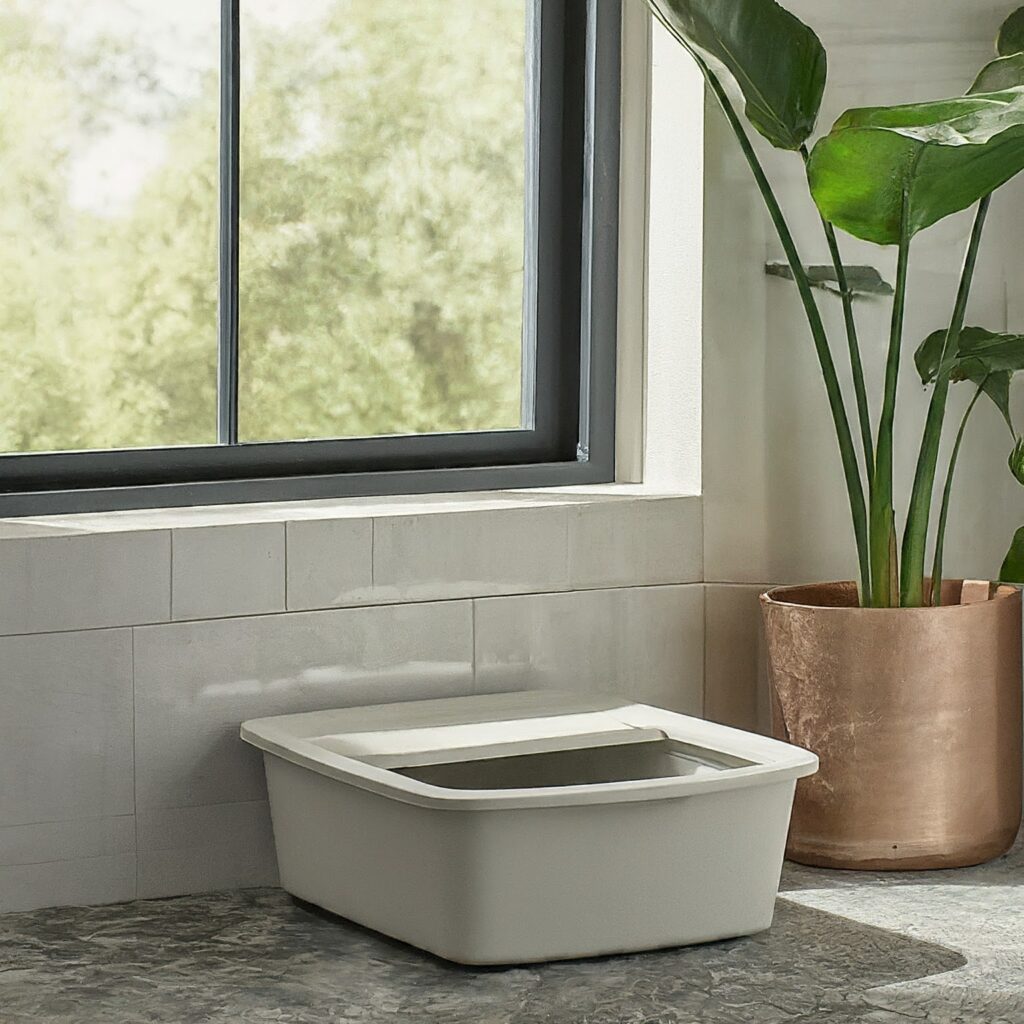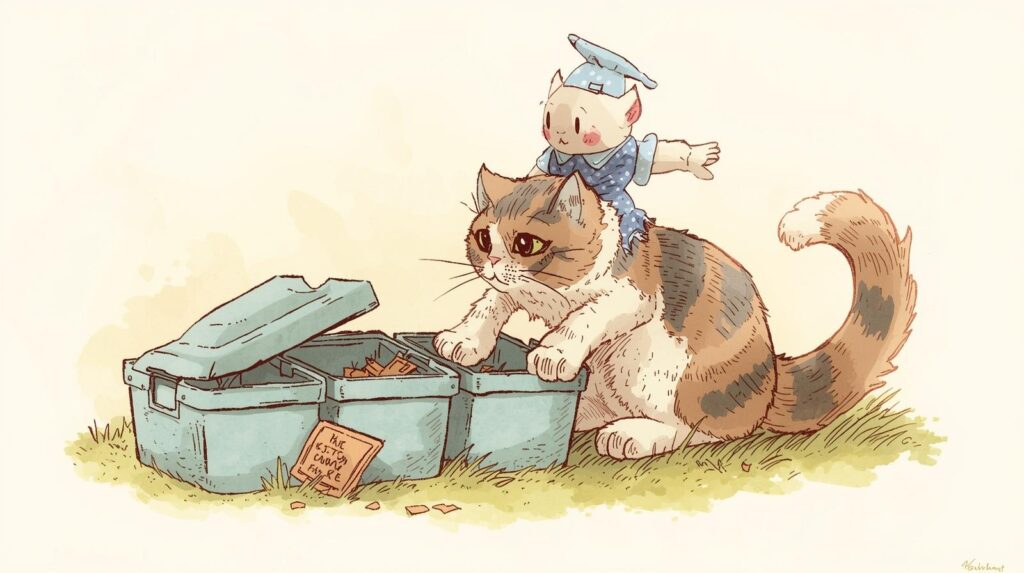Sometimes you find your cat litter off the floor this is a common challenge for cat owners. While cats provide companionship and joy, managing their litter box can sometimes be a hassle, especially when litter gets tracked around the house. This Purrfect Insights guide aims to provide practical solutions and insights to help minimize litter tracking and keep your home cleaner.
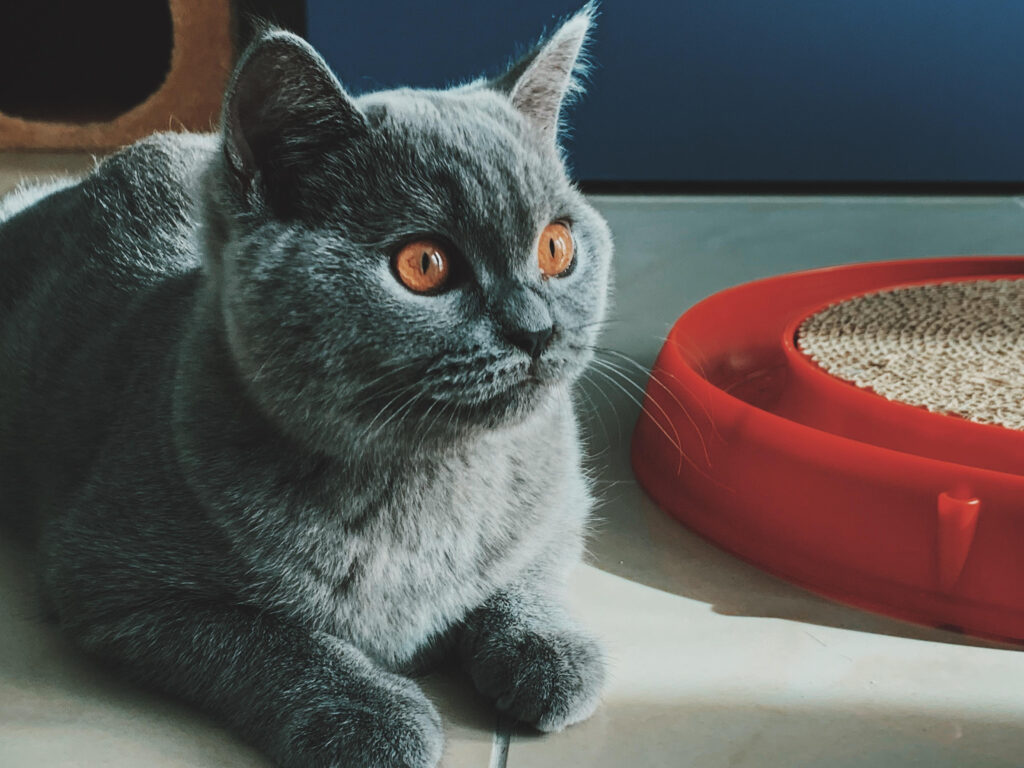
Table of Contents
how to Keep Cat Litter Off the Floor?
To keep cat litter off the floor, consider using a litter mat placed just outside the litter box. These mats have textured surfaces that trap litter as your cat exits the box, preventing it from spreading across the floor.
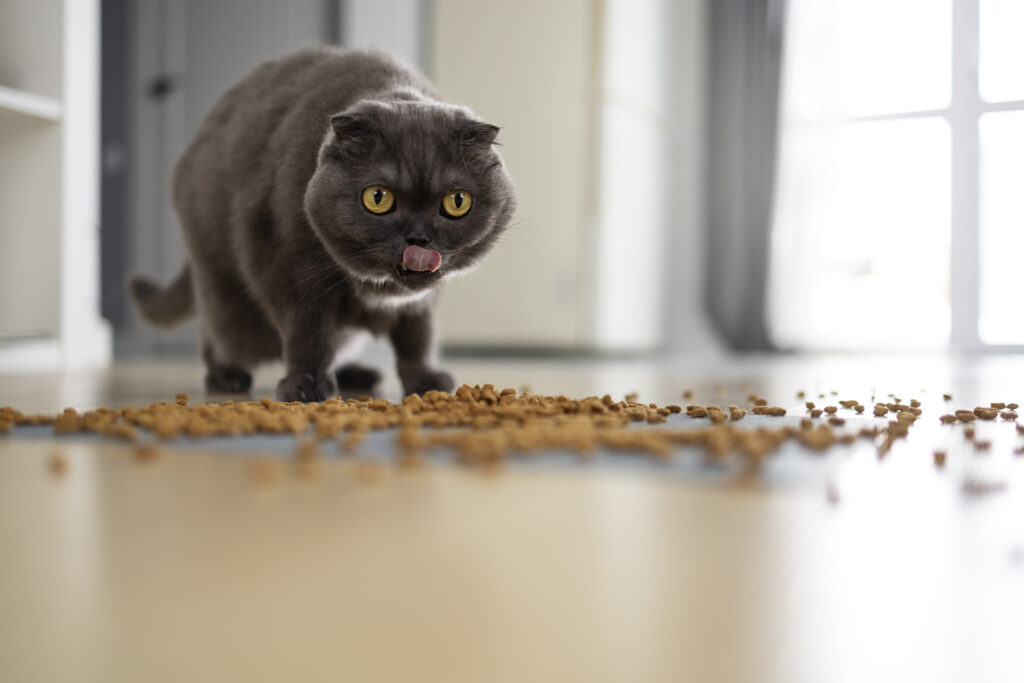
Additionally, using a high-sided litter box can help contain litter scatter, as can placing the litter box in a corner or against a wall. Regularly sweeping or vacuuming around the litter box area will also help maintain cleanliness. Some cat owners opt for litter boxes with lids or top-entry designs to further minimize litter spillage.
Finally, experimenting with different types of litter that produce less dust or tracking can also reduce the amount of litter that ends up outside the box.
Here are some practical solutions to keep your litter off the ground and keep your home clean, no tracking of litter in your home at all.
Choosing the Right Litter to reduce tracking
Selecting the right type of litter is crucial in reducing tracking and maintaining a clean living space. Here are some important considerations:
What type of litter is best for reducing tracking?
Different types of cat litter have varying properties that affect how much litter gets tracked outside the box. Here are some common types and their effectiveness:
- Clay Litter: Traditional clay litter is absorbent and clumps well, but it can be dusty and easily tracked. Look for “low-dust” or “low-tracking” clay litter varieties.
- Silica Gel Litter: Made from silica crystals, this type of litter is highly absorbent and produces less dust. It’s generally good at minimizing tracking because the granules are larger and less likely to stick to your cat’s paws.
- Biodegradable Litter: Options like corn, wheat, or wood pellets are environmentally friendly and can also be effective in reducing tracking. Like shredded newspaper cat litter tends to be heavier and less likely to stick to paws.
Here are some of the best cat litters in the market
Experimenting with different types of litter can help you find the best option for your cat and your home.
Are there specific brands of cat litter mats that work best?
A good cat litter mat can significantly reduce the amount of litter tracked around your house. When selecting a mat, consider the following:
- Size: Ensure the mat is large enough to cover the area around the litter box and catch litter from your cat’s paws as they exit.
- Texture: Mats with a textured surface or deep grooves are more effective at trapping litter. Some popular types include rubber or silicone mats with ridges and mesh mats that allow litter to fall through to a lower layer.
- Ease of Cleaning: Choose a mat that is easy to shake out, vacuum, or wash. This ensures that maintaining cleanliness is straightforward and hassle-free.
Some highly recommended brands include:
- Gorilla Grip Original Durable Cat Litter Mat: Known for its large size and deep grooves that trap litter effectively.
- PetFusion ToughGrip Cat Litter Mat: Made of silicone, this mat is durable, waterproof, and easy to clean.
- Pawkin Phthalate Free Cat Litter Mat: This mat has a soft, rubbery texture with deep grooves to trap litter and is easy to clean with a vacuum or hose.
What are the pros and cons of different types of tracking cat litter?
Each type of cat litter has its advantages and disadvantages, which can affect your decision based on your priorities:
- Clay Litter
- Pros: Highly absorbent, clumps well, widely available, and affordable.
- Cons: Can be dusty, heavier, and more likely to track.
- Silica Gel Litter
- Pros: Very absorbent, low dust, less frequent changing required, and good odor control.
- Cons: More expensive and some cats may not like the texture of the crystals.
- Biodegradable Litter (Corn, Wheat, Wood, etc.)
- Pros: Environmentally friendly, less dust and some types can be flushed (check local regulations).
- Cons: Can be more expensive and may require more frequent changes due to less odor control compared to traditional litters.
Here is the ultimate guide that why your cat litter is not clumping
Choosing the right litter and associated products, like mats, can greatly reduce the mess and make maintaining your cat’s litter box a simpler and cleaner task
Litter Box Selection and Setup to keep the litter off the ground?
The type and setup of the litter box play crucial roles in controlling litter mess. Here’s how to optimize your choices to minimize tracking and spillage:
Does the type of litter box affect how much litter gets tracked outside?
Yes, the type of litter box can significantly impact how much litter gets tracked outside. Here are a few types and their effects:
- Open Litter Boxes: Open litter boxes are simple and easy to clean but offer no barriers to litter being kicked out or tracked out.
- High-Sided Litter Boxes: These boxes have higher walls, which can help contain litter that gets kicked around. They are a good option for cats who dig vigorously.
- Covered (Hooded) Litter Boxes: Covered boxes have a top, reducing the amount of litter that can be kicked or tracked out. However, some cats might feel claustrophobic using them.
- Top-Entry Litter Boxes: These boxes have an opening on the top, which forces cats to jump in and out. This can significantly reduce the amount of litter tracked outside as litter falls back into the box when the cat exits.
What are the benefits of using a covered litter box versus an open one?
Covered Litter Box:
- Pros:
- Reduces the spread of litter outside the box.
- Helps contain odors.
- Provides privacy for the cat, which some cats prefer.
- Cons:
- Can be more challenging to clean.
- Some cats may not like the enclosed space.
- If not cleaned regularly, odors can build up inside the cover.
Open Litter Box:
- Pros:
- Easier to clean and maintain.
- Allows for better airflow, reducing odors.
- More accessible for cats, especially those who are older or have mobility issues.
- Cons:
- Litter is more likely to be kicked or tracked out.
- Odors are not contained as effectively.
Can changing the location of the litter box help reduce litter mess?
The location of the litter box can influence how much litter gets spread around. Consider these tips:
- Low-Traffic Areas: Place the litter box in a low-traffic area to minimize the spread of litter by foot traffic.
- Hard Surfaces: Position the litter box on hard floors rather than carpet. It’s easier to clean litter from hard surfaces.
- Accessible but Discreet: Ensure the box is in a location that is easy for your cat to access but discreet enough to keep litter contained.
Maintenance and Cleaning
Regular maintenance and cleaning routines are essential to keep litter tracking under control. Here’s how to manage it effectively:
How often should I clean around the litter box to prevent litter mess?
Frequent cleaning helps prevent litter from spreading and keeps the area around the litter box tidy:
- Daily Cleaning: Scoop the litter box at least once a day to remove waste. This keeps the litter box clean , prevents maggots, and reduces the amount of litter your cat might track out.
- Weekly Cleaning: Thoroughly clean the litter box and replace the litter once a week. This helps maintain hygiene and reduces odors.
- Around the Box: Sweep or vacuum the area around the litter box daily. This helps catch any stray litter before it gets tracked further into your home.
How often should I replace the cat litter to keep it clean and minimize mess?
The frequency of replacing cat litter depends on the type of litter you use and the number of cats you have:
- Clay Litter: Replace clay litter every one to two weeks, depending on the number of cats and how heavily the litter box is used.
- Silica Gel Litter: Silica gel litter can last up to a month with regular scooping, but it’s best to replace it every two to three weeks for optimal odor control.
- Biodegradable Litter: Biodegradable litter may need to be replaced more frequently, every one to two weeks, to maintain freshness and control odors.
What are some techniques for sweeping or vacuuming around the litter box area more effectively?
Effective cleaning techniques can help keep the litter box area clean and reduce litter tracking:
- Use a Handheld Vacuum: A handheld vacuum can quickly pick up stray litter around the box. Choose one with strong suction and a good filter.
- Broom and Dustpan: Keep a broom and dustpan near the litter box for quick daily cleanups.
- Litter Mat Maintenance: Shake out or vacuum the litter mat regularly to remove trapped litter. Wash it periodically to maintain hygiene.
- Floor Cleaning: For hard floors, use a damp mop to pick up fine dust and remaining litter particles that a broom or vacuum might miss.
By choosing the right litter box and maintaining a regular cleaning schedule, you can significantly reduce the amount of litter that ends up on your floors, keeping your home cleaner and more pleasant for both you and your cat.
Additional Tools and Accessories For tracking
In addition to the right litter and litter box, various tools and accessories can help keep litter off the floor. Here’s a look at some effective options:
Are there specific brands of cat litter mats that work best?
Cat litter mats are essential in trapping litter that gets stuck to your cat’s paws as they exit the litter box. Some highly recommended brands include:
- Gorilla Grip Original Durable Cat Litter Mat: Known for its durability and deep grooves that effectively trap litter. It’s also easy to clean by shaking out, vacuuming, or rinsing.
- PetFusion ToughGrip Cat Litter Mat: Made from silicone, this mat is waterproof, durable, and easy to clean. The raised outer lip helps contain litter and spills.
- Pawkin Phthalate Free Cat Litter Mat: This mat features a soft, rubbery texture with deep grooves to trap litter. It’s easy to clean and safe for cats, being free of harmful chemicals.
Can using a double mat system really make a difference in reducing litter tracking?
Yes, a double mat system can be very effective in reducing litter tracking. Here’s how it works:
- Primary Mat: Place a larger, textured mat directly outside the litter box. This mat will catch most of the litter from your cat’s paws.
- Secondary Mat: Position a second mat a few feet away from the first one. This secondary mat will catch any litter the first mat might have missed.
Using two mats increases the chances of trapping litter before it spreads further into your home, making it a practical solution for heavily trafficked areas.
What are the most effective litter box liners for preventing litter spillage?
Litter box liners can help contain litter and make cleaning easier, especially for boxes not lined with non-stick materials. Some effective options include:
- Nature’s Miracle Drawstring Litter Box Liners: These heavy-duty liners are tear-resistant and have a drawstring closure for easy removal and disposal.
- Jonny Cat Heavy Duty Litter Box Liners: Known for their strength, these liners are designed to withstand scratching and tearing, ensuring litter stays contained.
- Petmate Arm & Hammer Disposable Litter Box Liners: Infused with baking soda, these liners help control odors and are durable enough to prevent spills and tears.
Training and Behavior
Understanding and influencing your cat’s behavior can also help in reducing litter mess. Here’s how to approach training and behavior management:
How can I train my cat to minimize litter tracking?
Training your cat to reduce litter tracking involves a few simple strategies:
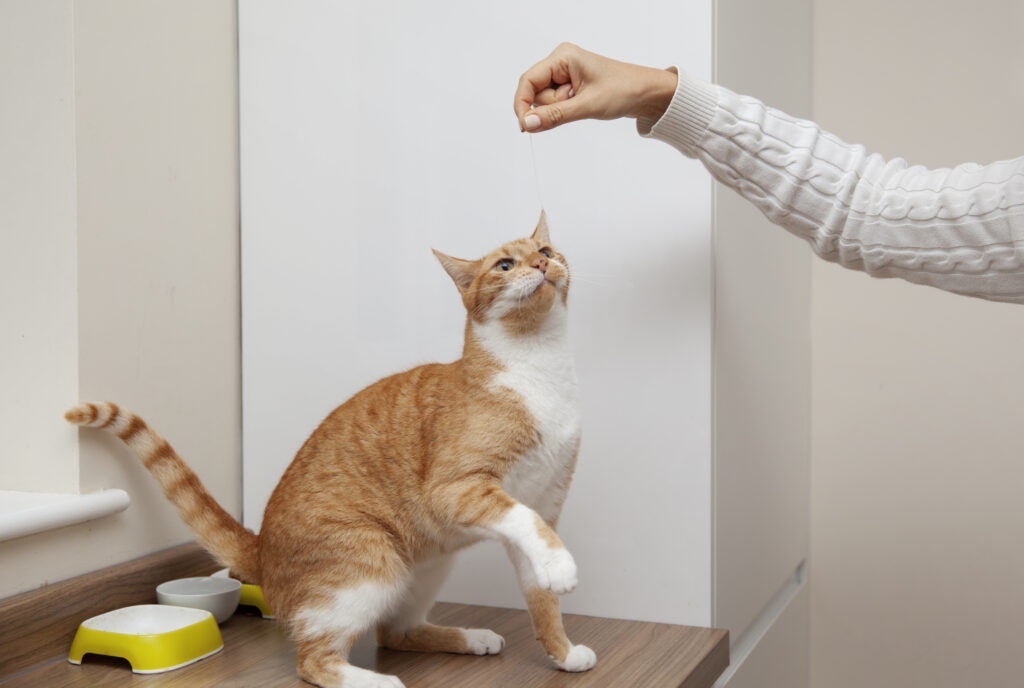
- Paw Cleaning: Gently wipe your cat’s paws with a damp cloth when they exit the litter box. Over time, your cat may become accustomed to this routine.
- Positive Reinforcement: Reward your cat with treats or praise when they use the litter box without creating a mess. Positive reinforcement can encourage them to adopt cleaner habits.
- Gradual Changes: If you’re introducing a new type of litter or litter box, do so gradually. Sudden changes can stress your cat, leading to more mess.
What are some signs that my cat may not like their litter box setup and is causing more mess?
Cats are particular about their litter box setup, and if they are dissatisfied, they may exhibit behaviors that increase litter mess. Look for these signs:
- Frequent Accidents: If your cat is urinating or defecating outside the litter box, it clearly shows they are unhappy with the setup.
- Hesitation: If your cat hesitates or appears reluctant to use the litter box, they may find it uncomfortable or unclean.
- Excessive Digging: While some digging is normal, excessive digging or scratching outside the box may indicate dissatisfaction with the litter or box type.
To address these issues, ensure the litter box is clean, accessible, and comfortable for your cat. Experiment with different types of litter and box designs to find what suits them best.
How can I keep litter from sticking to my cat’s paws?
To prevent litter from sticking to your cat’s paws, consider these tips:
- Use Low-Tracking Litter: Opt for litter specifically designed to minimize tracking. Larger granules or silica crystals are less likely to stick to paws.
- Keep Litter Dry: Wet litter is more likely to clump and stick to your cat’s paws. Ensure the litter box is kept dry by cleaning it regularly and replacing soiled litter promptly.
- Regular Grooming: Trim the fur around your cat’s paws to reduce the amount of litter that can get caught. Regular grooming helps keep your cat’s paws clean.
By incorporating the right tools, accessories, and training techniques, you can significantly reduce litter tracking and maintain a cleaner home environment for both you and your cat.
Managing Multi-Cat Households
In homes with multiple cats, managing litter can become more challenging. Here are strategies to keep litter contained and maintain cleanliness:
What are some ways to keep litter contained in multi-cat households?
Managing litter in a multi-cat household involves additional considerations:
- Multiple Litter Boxes: Provide at least one litter box per cat, plus one extra. This reduces the likelihood of litter box overcrowding and encourages all cats to use the litter boxes instead of other areas.
- Strategic Placement: Place litter boxes in different locations throughout the house to prevent territorial disputes and ensure each cat has easy access to a box.
- Regular Maintenance: Increase the frequency of cleaning and scooping to maintain hygiene. In multi-cat households, litter boxes can become soiled more quickly.
- Sturdy Litter Mats: Use large, heavy-duty litter mats around each litter box to catch stray litter. Ensure they are cleaned regularly to maintain effectiveness.
- Litter Box Types: Consider using a combination of high-sided, covered, and top-entry litter boxes to suit different preferences and minimize tracking.
Health and Safety Considerations
Keeping litter under control isn’t just about cleanliness; it also involves ensuring a healthy environment for both you and your cats.
Are there any health concerns with certain types of cat litter that track more?
Yes, some types of cat litter can pose health risks, particularly if they are dusty or made from materials that can cause respiratory issues:
- Clay Litter: Traditional clay litter, especially non-clumping varieties, can produce a lot of dust. Dusty litter can cause respiratory problems for both cats and humans, especially those with allergies or asthma.
- Silica Gel Litter: While low in dust, silica gel litter can cause digestive issues if ingested in large quantities by your cat during grooming.
- Biodegradable Litter: Generally safer, biodegradable litter like corn, wheat, or wood pellets produce less dust. However, some cats may be allergic to certain materials, so monitor your cat for any signs of allergies or discomfort.
To minimize health risks:
- Choose low-dust, hypoallergenic litters.
- Ensure good ventilation around the litter box area.
- Clean the litter box regularly to prevent the buildup of harmful bacteria.
How can I effectively clean litter from my cat’s fur?
If litter sticks to your cat’s fur, particularly long-haired breeds, it’s important to clean them gently:
- Regular Grooming: Brush your cat regularly to prevent litter from sticking to their fur. This is particularly important for long-haired cats.
- Spot Cleaning: Use a damp cloth to gently wipe off any litter stuck to your cat’s fur. Avoid using any harsh chemicals or soaps.
- Bathing: If necessary, give your cat a bath using a mild cat-safe shampoo. Ensure you rinse thoroughly to remove all litter particles.
Conclusion Keep the cat litter off the Ground
Keeping cat litter off the floor requires a combination of the right tools, regular maintenance, and understanding your cat’s behavior. Here’s a summary of best practices:
- Choose the Right Litter: Opt for low-tracking, low-dust options that suit your cat’s preferences.
- Select the Right Litter Box: High-sided, covered, or top-entry litter boxes can reduce litter spread.
- Maintain Cleanliness: Regularly clean the litter box and the surrounding area to prevent litter buildup.
- Use Effective Accessories: Invest in high-quality litter mats and consider a double mat system for better litter control.
- Train and Groom Your Cat: Train your cat to minimize tracking and keep their paws and fur clean.
- Manage Multi-Cat Households: Provide multiple litter boxes and ensure they are placed strategically to accommodate all cats.
By implementing these strategies, you can create a cleaner, more comfortable environment for both you and your cats. Regular attention to your cat’s litter habits and environment will help keep your home free from stray litter and make litter box maintenance a more manageable task.

